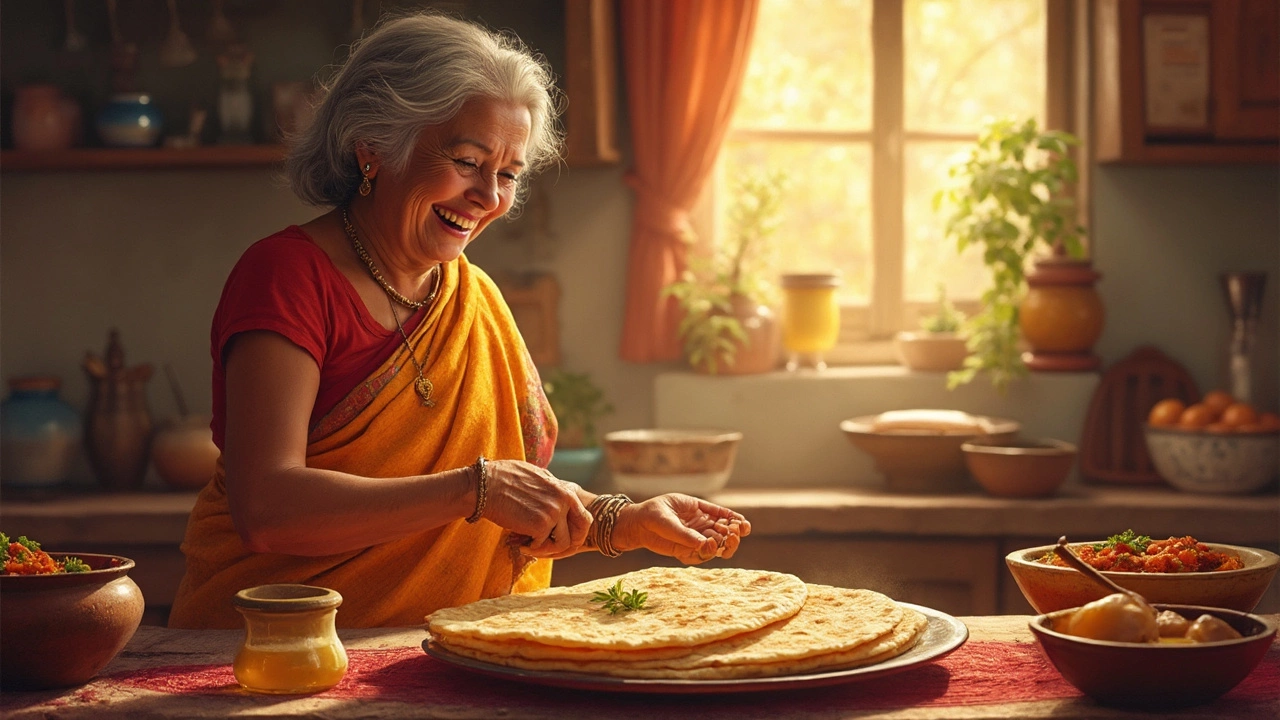Homemade Roti Calories – Guide to Energy Content
When talking about Homemade Roti Calories, the amount of energy in a roti prepared at home using typical Indian cooking methods. Also known as home‑made roti energy, this metric lets you keep tabs on portion size and overall diet quality. Roti, a thin Indian flatbread made from wheat flour, water and optional fat is a staple across the subcontinent, but its calorie load can swing wildly based on a few simple choices. Understanding Calories, units of energy that foods provide in the context of a homemade roti helps you balance taste and health without sacrificing authenticity. Below we’ll break down the key factors that drive calorie count, from flour type to cooking fat, and show how each decision ties back to overall Nutrition, the collection of nutrients a food supplies. homemade roti calories become clearer when you see the science behind dough hydration, oil timing, and puff‑up techniques.
What Affects Roti Calorie Count?
First, the base flour matters. Whole‑wheat flour packs more fiber but also slightly more calories per cup than refined atta; a typical cup of whole‑wheat has about 410 kcal versus 380 kcal for white flour. Adding oil, a common fat used to soften dough and improve puffing or butter can add 120 kcal per tablespoon, so the point of addition is crucial. If you oil the dough during kneading, the fat stays embedded, raising the total energy; sprinkling a tiny drizzle after cooking adds flavor with far fewer calories that are easier to control. Some cooks experiment with baking soda, a leavening agent that can make rotis softer and fluffier or a pinch of baking powder, another leavening option that subtly changes texture and may affect calorie perception. While these additives contribute negligible calories, they influence how many rotis you can comfortably eat because a lighter bite feels less filling.
Portion size is the final, often overlooked, piece of the puzzle. A standard 6‑inch roti weighs around 45 g, translating to roughly 150 kcal if made with plain white flour and no added fat. Scaling up to a 9‑inch roti can push the weight to 80 g and the calorie count past 260 kcal, even before you think about oil. Tracking the exact weight with a kitchen scale gives the most accurate calorie count, the precise energy value for a specific serving and helps you compare homemade versus store‑bought versions. Pairing rotis with high‑protein dishes like dal or paneer can balance the meal’s glycemic impact, making the calories work harder for you. By mastering flour choice, fat timing, leavening tweaks, and portion control, you’ll have a clear roadmap to manage homemade roti calories while still enjoying that soft, puffed flatbread we all love. Below you’ll find a curated set of articles that dive deeper into each of these aspects, from fixing roti that won’t puff to using baking soda wisely.

Calories in 1 Roti: Understanding Your Meal
Many people enjoy homemade roti as a staple in their diet, yet often ponder 'how much calories in 1 roti?' A simple roti is nutritious and a part of traditional meals. This article explores the calories in 1 roti, and how it fits with other meals, like sabzi or even with ghee. Discover ways to enjoy your roti without overindulging in calories.